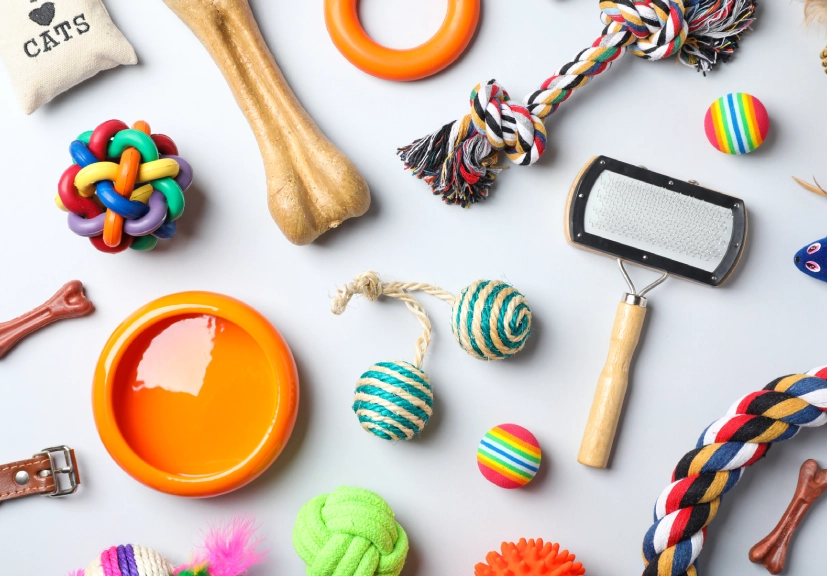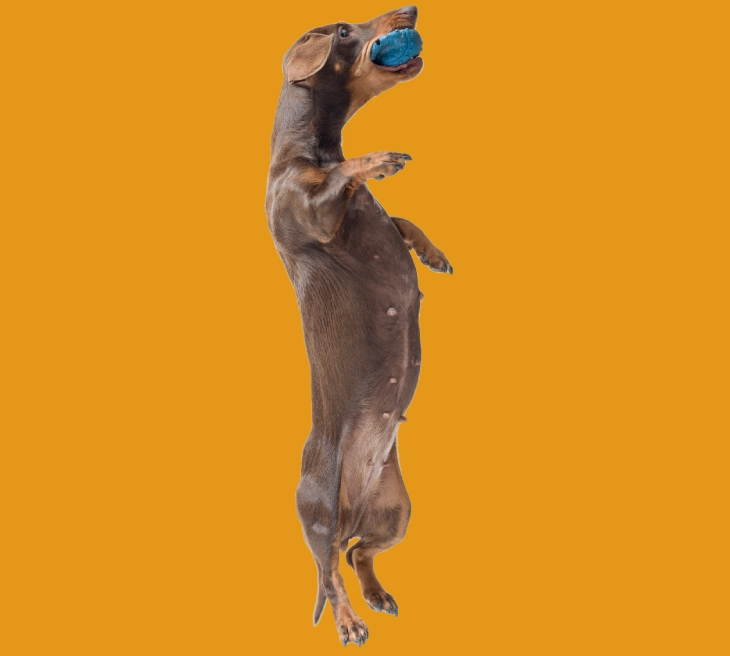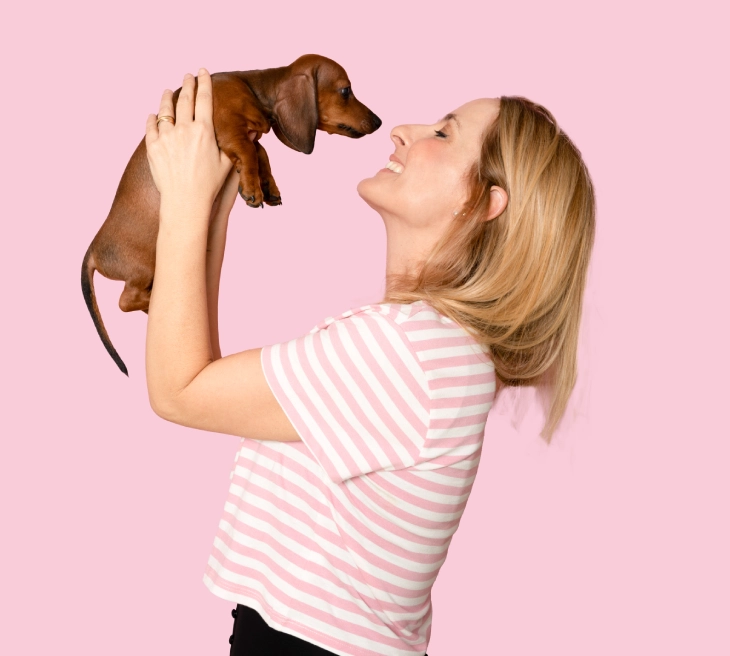Choosing Safe Toys for Your Pet

W
hen choosing safe toys for your pet, prioritize durable, non-toxic materials like nylon, rubber, and natural wood. Avoid toys with small, detachable parts that could pose choking hazards. Consider your pet’s age, size, and activity level when selecting appropriate toys, and consult with your vet for personalized recommendations. Regularly inspect toys for wear and tear, and promptly replace any damaged items. By following these guidelines, you’ll ensure your pet’s playtime is both enjoyable and secure.
Prioritizing Safety: What to Look for in Pet Toys
When selecting toys for your furry friend, it’s crucial to prioritize safety above all else. Choose dog toys made from durable, non-toxic materials like nylon, rubber, or natural wood to minimize the risk of choking hazards and intestinal blockages. Avoid toys with small, detachable parts that can be easily swallowed. Consult your veterinarian for guidance on selecting toys of appropriate size for your pet’s age, breed, and activity level. Inspect toys regularly for signs of wear and tear, discarding any damaged items that could pose a safety risk. Prioritize toys that provide mental stimulation and engage your pet’s natural behaviors, as this contributes to their overall well-being. By focusing on safety, you’ll ensure that playtime remains enjoyable and risk-free for your beloved companion.

Decoding Labels: Identifying Toxic Materials to Avoid
Have you ever wondered what lurks beneath the surface of your pet’s favorite toy? Decoding labels is crucial for identifying toxic materials that could harm your furry friend. When shopping for toys, watch out for these red flags:
- Toys with metal components, which may contain toxic antimony
- Vinyl dog toys made with harmful phthalate chemicals
- Plastic toys that aren’t BPA-free
- Products lacking clear labeling about potentially toxic substances like lead, chromium, or bromine
Opt for durable, non-toxic materials such as nylon, rubber, or natural wood instead. Avoid rawhide chew toys that can cause choking and plush or stuffed toys with chemical odors. By carefully reading labels, you’ll keep your pet safe from hidden dangers.
Age and Size Matter: Selecting Appropriate Toys for Your Pet
Selecting non-toxic toys is just the first step in ensuring your pet’s safety. You must also consider your dog’s age, size, and chewing habits when choosing appropriate toys. Puppies and small breeds need smaller, softer toys to prevent choking hazards, while larger dogs require durable, robust toys suited for their strength. Older pets may prefer gentle, low-impact toys that don’t risk injury due to decreased mobility or dental issues. Toy size should allow your dog to comfortably manipulate the item without swallowing it whole. Consult your veterinarian for personalized recommendations on appropriate toy choices for your pet’s specific needs and developmental stage. By carefully selecting toys based on these factors, you’ll promote safe, enjoyable playtime and maintain your dog’s overall health and well-being.
Toy Rotation and Maintenance: Keeping Playtime Fresh and Safe
Two simple strategies can help keep your pet’s playtime engaging and safe: regularly rotating their toys and diligently maintaining them. Rotating toys helps prevent boredom, as dogs enjoy the excitement of rediscovering “new” items. This approach keeps your dog mentally stimulated and eager to play. When choosing the right toys for dogs, consider the following:
- Inspect toys regularly for wear and tear
- Remove and replace damaged toys promptly
- Select appropriate toys based on your dog’s size and age
- Opt for durable, high-quality toys made for dogs
Consulting Your Vet: Tailoring Toy Choices to Your Pet’s Needs
When it comes to choosing the right toys for your pet, consulting your veterinarian is a crucial step. They can provide tailored recommendations based on your dog’s size, breed, age, and chewing habits to ensure safe and enjoyable playtime. Veterinary guidance is essential for selecting toys that match your pet’s developmental stage and activity level, promoting their overall health and well-being. Your vet can advise on suitable materials and design features to prevent potential hazards, and they can help you choose toys that address specific behavioral or medical needs, such as dental health or anxiety. Regular check-ins with your vet allow you to update toy selections as your pet grows and their preferences change, ensuring a lifetime of safe and engaging playtime.
Frequently Asked Questions
How Do I Choose a Safe Dog Toy?
Choose toys appropriate for your dog’s size and chewing habits. Opt for durable, non-toxic materials that meet safety standards. Supervise playtime, regularly inspect toys for damage, and store them properly to maintain cleanliness and prevent hazards.
How Do I Choose the Right Pet Toy?
Prioritize pet toy safety by selecting appropriate sizes, durable chew toys, and interactive puzzles. Opt for noise-free options and exercise caution with plush toys. Maintain water-based toys and replace squeakers as needed for your pet’s well-being.
What Toys Do Vets Recommend for Dogs?
Vets recommend durable chew toys, puzzle feeders, and interactive toys like Kongs and Nylabones for mental stimulation. Avoid plush or rope toys that can be shredded and ingested. Supervise playtime with squeaky or fetch toys.
What Is the Safest Material for Dog Toys?
The safest materials for dog toys are natural fibers, durable rubber, and tough nylon. Choose interactive puzzle toys, edible dental treats, and chew-resistant rope toys. Avoid rawhide, and opt for soft plush squeakers for gentle play.
What do you think?
Related Articles

Best Toys for Happy Pets
To keep your pet happy, choose toys that match their personality, age, and size. For…

Essential Training Tips for Cats & Dogs
Whether you’ve got a curious cat or a doting dog, training is essential for strengthening…

Tick Removal and Prevention Tips
Mental stimulation is essential for your pet’s cognitive health, development, and overall…